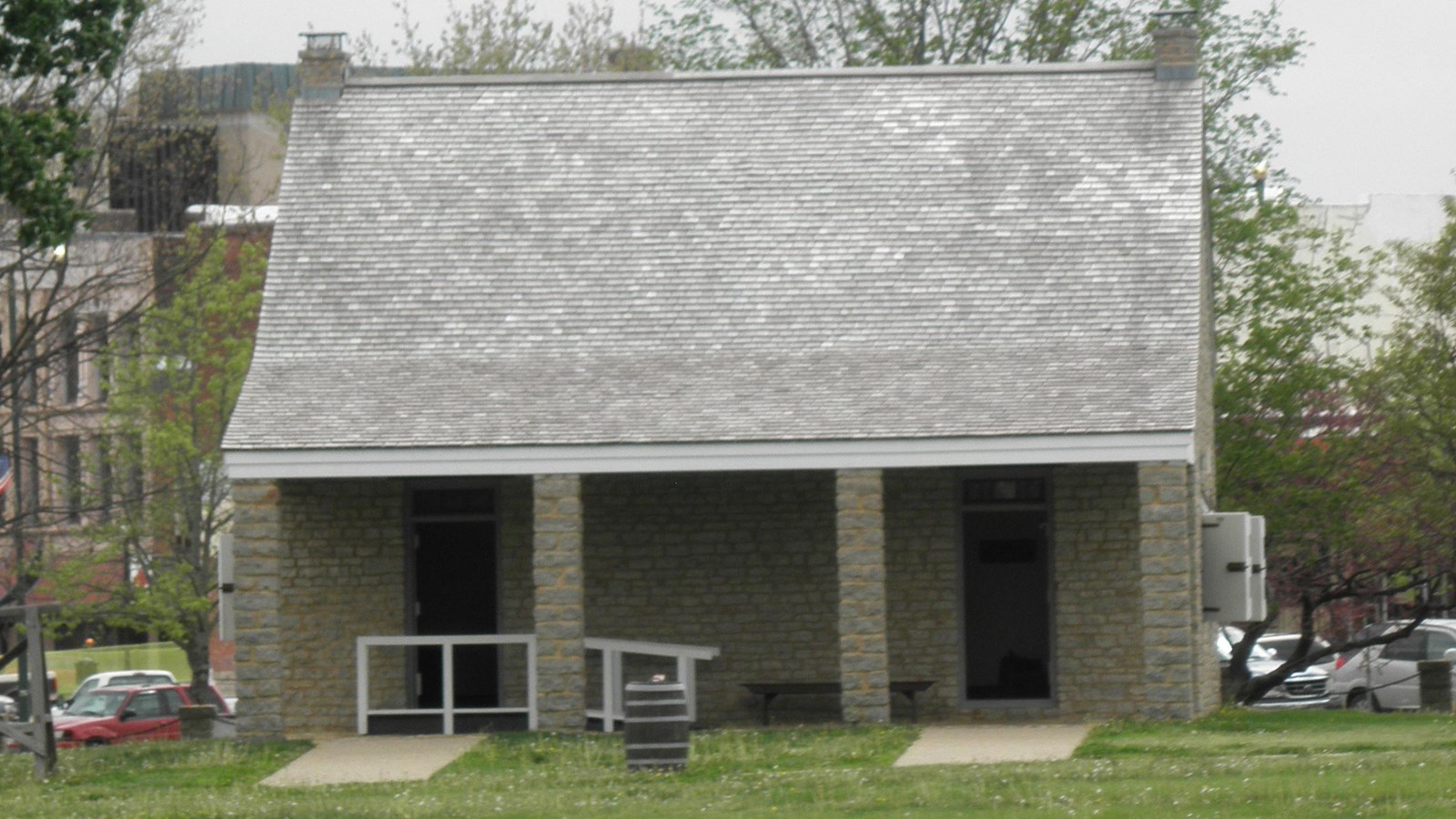Last updated: July 13, 2021
Place
Guardhouse

NPS Photo
Historical/Interpretive Information/Exhibits, Trash/Litter Receptacles, Wheelchair Accessible
The guardhouse in front of you served two purposes. It functioned as a jail for soldiers who had violated military laws and regulations and as a shelter for the guards who played a vital role in the fort's protection and security. The duties of the guards included patrolling the fort, enforcing the rules and watching prisoners.
Discipline at any post of the 1800s was strict; punishments were harsh and often cruel. Punishments ranged from reduction in rank, stoppage of pay, and confinement in the guardhouse for minor offenses, to "bucking and gagging," "spread eagle," standing on a barrel, confinement in a choke box or the solitary cells, mounting the wooden horse, and even wearing iron collars or balls and chains.
One soldier at a different post wrote that the United States Army had "acquired a very odious notoriety for the diabolically inhuman treatment of the enlisted men by their officers" Men were kicked, cuffed, cursed, and even mauled without cause, as suited "the caprice or anger" of the officers. Although laws existed to protect the soldiers, they were loosely enforced.
Guard Room
Quarters for the guard adjoined the prison section, because one of the duties of the guard detail was to provide prison security. The chief furnishings in the guardroom would have included benches, shelves, and a platform bed for the men resting between assignments. When a soldier was assigned to guard duty, he was assigned for twenty-four hours straight. He would generally patrol for two hours then rest for four hours, patrol for two hours, then rest for four hours and so on throughout the twenty-four hour period. During the four hour rest period, if the guard wished to lay down and rest, he would have had to do so on the platform bed. But he would've had the option of laying down on the bed only during the day. At night, he could neither sleep nor lay down under any circumstances.
Weapon racks probably were common also, along with tables and benches. Fireplaces or stoves would have provided heat, and generally the guard claimed extra candles because of their need for nighttime lighting. Since the guard was the first line of attack against fire, leather buckets would have been readily at hand.
Cells
Each guardhouse had an area set aside for light and dark cells, which were reserved for the worst offenders - soldiers who refused to obey orders, had delirium tremens, were riotous, or perhaps were mentally disturbed. The light cells had small openings in or above the doors admitting some light and air. Dark cells had solid doors, and ventilation was provided by openings in the rear wall or by shafts. Cells were unheated and without sanitary facilities. Buckets served the latter purpose. Since many guardhouses were built of stone, like Fort Scott's, the cell areas were cold and damp. Although the surgeons at the garrisons around the country worried about the foul air, it was not until years after the Civil War that conditions improved for those in confinement.
Prison Room
Prisoners with light sentences were placed in the prison room. This usually was a large room with adequate ventilation but unheated. There seems to have been no furnishings in the room. The men brought their blankets and slept on the floor. One soldier, during a stay in different military guardhouse , indicated he preferred the cells to sleeping in the prison room with the other inmates.
Officer's Room
The officer of the guard directed the activities of the guards on his watch. Officers rotated into this role every 24 hours along with guard mounting or the changing of the guard. His duties included frequent roll calls, being present for the relief of sentries every two hours, and oversight of the noncommissioned officers who had direct supervision of the guards. He would be responsible for delivering the countersign or password to the sentries, treatment of prisoners, and responding to the guards when they challenged someone leaving or coming on to the grounds of the fort without authorization. He used a room in the guardhouse as temporary quarters while on duty. In this room, he kept details of prisoners and sentences on his watch, and prepared a record of his tour of duty. Because of the complexity and importance of the job, only experienced officers were assigned this duty.
